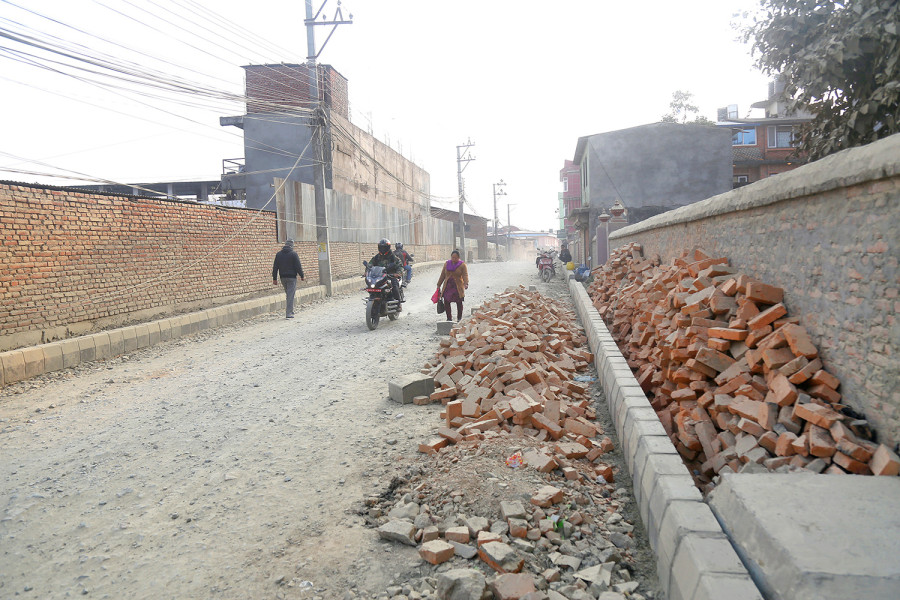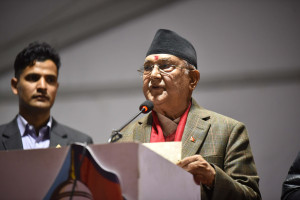Editorial
Death traps
The way public infrastructures are left unattended shows criminal apathy of authorities to citizen safety.
“Under construction” or “under maintenance” is the permanent state of Nepal’s roads, more so in the case of those in the Kathmandu Valley. The Valley roads, dug at the whims of one agency or another and perennially left open, look as if they are just waiting for an unassuming victim to fall in the ditches. And with the monsoon floods dampening the citizens’ skills of circumnavigating those ditches, the roads often become death traps.
The case of Sajan Magar, a 13-year-old boy who went missing on Sunday after being swept away by an unguarded brook in Samakhushi, is yet another reminder of the criminal apathy of authorities to citizen safety. What is appalling is that the teenager is just one of many individuals who fall victim to the negligence of those mandated to make public infrastructure safe for all. Examples abound from the Kathmandu Valley itself: Less than two years ago, another young boy who fell into a ditch in Kapan was swept away. Earlier, a woman who fell into a similar opening in Baneshwor was later found in the River Bagmati.
Another school girl who fell into an open drain and was swept away was luckily rescued by good samaritans within seconds. Kathmandu Mayor Vidya Sundar Shakya had then met the girl and assured that he would make the roads safer. Shakya sat on his promises until his tenure ended. Current Kathmandu Mayor Balendra Shah, who never fails to boast of his background as a structural engineer, continues to overlook the structural flaws in the public infrastructures under his jurisdiction. But this is not just the fault of Shakya and Shah; it is the result of decades of haphazard infrastructure development practices—initiated by public officials and representatives of all hues—that overlook the concerns of the citizens.
Moreover, the haphazard infractures pose danger throughout the year, as pedestrians, motorcyclists and cyclists regularly fall into the ditches and drains left open by irresponsible public officials and contractors. Earlier this month, three people died when a low-hanging high-voltage electric cable electrocuted a moving bus in Salyan. More often than not, such incidents are relegated to the status of bhavitavya, or destiny. But in fact, they are the result of negligence by the authorities who are mandated to fix these anomalies.
Even as security officials look out for Magar, the missing teenager, the existing development practices need a rethink too. Such cases should be thoroughly investigated and the officials and contractors who put citizens’ lives at risk punished. Public infrastructure cannot continue to invite disaster. Punitive action against those who fail their duties should be the first course of action. In the longer run, there is no alternative to instituting laws and practices that put people’s safety first in designing, building and maintaining all public infrastructure projects. Having open death traps littered through its length and breadth are a blot on the image of the national capital.




 10.12°C Kathmandu
10.12°C Kathmandu














